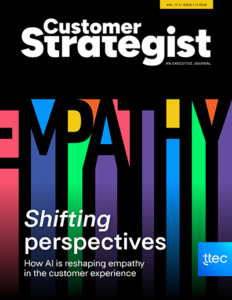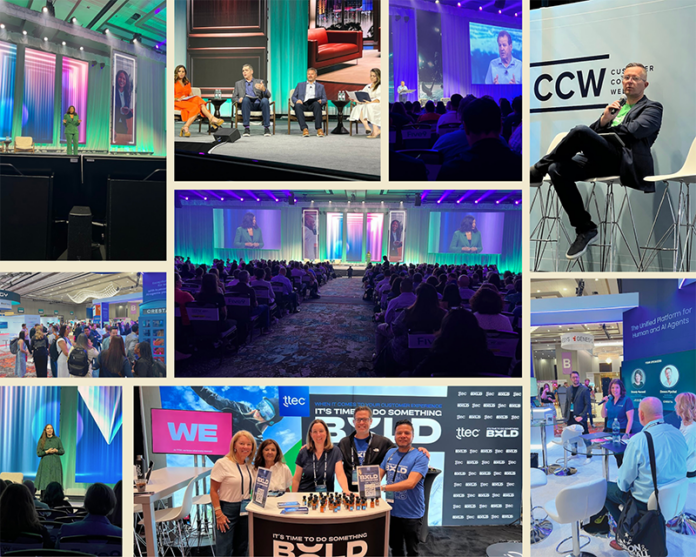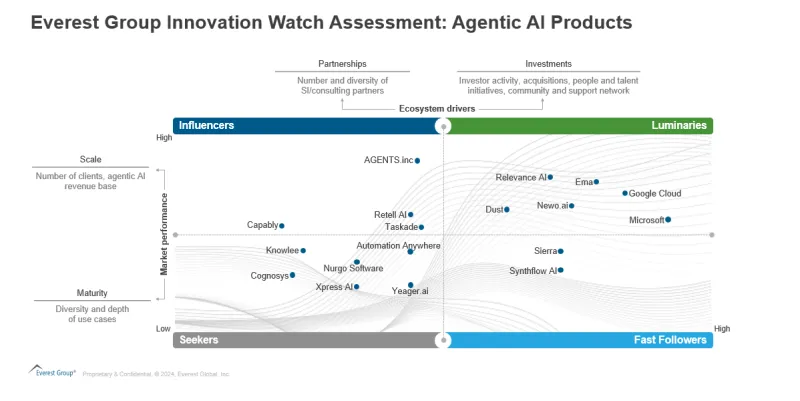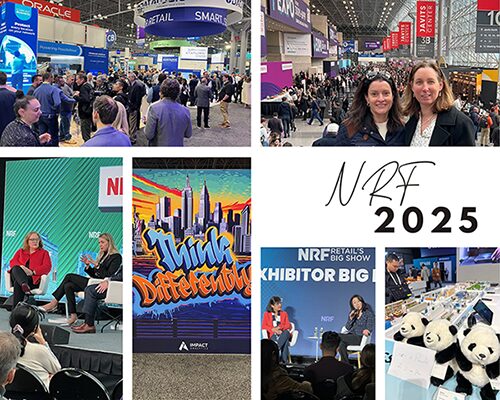With more technology and insights at their fingertips than ever before, retailers are diving into their data to learn more about customers so they can deliver better, more personalized shopping experiences.
Harnessing the power of AI-generated insights, offering hyper-personalized customer experiences (CX), and tapping into the buying power of Gen Z were key themes at the National Retail Federation (NRF) Big Show this month in New York City.
There was little discussion about AI as a technology at the event, which marked a change from recent years. By now, many retailers have integrated AI into their CX and don’t need to hear about its many benefits; they’re already witnessing them first-hand.
Instead, conversations focused on how brands are using AI and putting its insights to work. And some were already looking beyond AI and trying to gauge what the next “big thing” in retail technology might be.
Technology as a tool, not an endgame
Personalization was a hot topic at NRF as customers expect shopping experiences to feel tailored to their unique needs. Many companies spoke about harnessing the power of data to better understand customers’ habits and preferences. AI is playing a key role in efforts, but retailers said tech alone won’t drive the results they need.
“Technology is not the solution,” said Martin Urrutia, head of global retail experience and innovation at The LEGO Group. “When it’s used in the right way, it will only amplify what we’re doing [elsewhere].”
Technology will never replace the human interaction shoppers crave in certain moments, he said.
Ikea Chief Sustainability Officer Javier Quinones agreed, saying the home furnishings retailer is “extremely cautious” when exploring AI and other emerging tech. “Technology is not there to substitute; it’s there to support.”
When choosing when and where to adopt new technologies, brands should focus on how they can improve the customer journey and meet business goals, said Trang To, vice president of omni at Tapestry, which owns luxury fashion brands including Coach and Kate Spade.
“The way we think about AI is really enabling and accelerating our strategies,” she said.
Data is the name of the game
While AI wasn’t mentioned by name as much as it had been in previous years, conversations about data and insights were everywhere.
Customers are willing to share data about themselves if they think it will improve their shopping experiences, said Olivia Kwon Best, general manager of Adobe’s digital strategy group. Adobe works with retailers, including Ulta Beauty, to use data-driven insights to guide decision making.
Ulta’s loyalty program is 44 million members strong, with 95% of purchases made through the program, said Josh Friedman, vice president of digital products for Ulta. The program’s success gives the brand an incredibly clear picture of who its customers are, what they’re looking for, and how they prefer to shop, he said – which enables Ulta to serve up the right promotions and recommendations at the right times.
One challenge when it comes to collecting all this data, he said, is ensuring it can flow freely among the brand’s systems and platforms so shoppers have one unified experience and “all the touchpoints get harmonized.”
It’s easy to collect data during digital interactions but harder to quantify what’s resonating with shoppers in brick-and-mortar stores. In a panel discussion that asked what retail’s “next big tech gamechanger” will be, several retailers said they aim to improve in-store data gathering.
Ambient intelligence – which uses sensors, processors, and AI to create responsive environments – could be transformative for retail stores in the coming years, said Ellen Svanstrom, chief digital information officer at H&M.
She and others envisioned a future when a shopper could enter a store and ambient intelligence could identify the customer, quickly access her preferences and past purchases, and prompt store employees to deliver customized assistance or recommend certain items.
There’s huge untapped potential for brands to “leverage the same analytical rigor” in-store as they do in digital interactions, Tapestry’s To agreed.
In-store experiences move to the forefront
Even as many purchases are made online, some retailers are reinvesting in their brick-and-mortar stores – albeit differently than they have in the past.
LEGO’s Urrutia said the brand has been experimenting with livestreaming product demos from some stores, and adding in-store areas where customers can design their own mini-figures. There’s a new focus on incorporating “storytelling areas” in stores, he said, such as the world’s largest LEGO flower shop.
To make way for these experiential areas, he said, some stores have reduced the amount of inventory they carry. The goal is to make LEGO stores places where enthusiasts can come together to create and be inspired, he said.
Ikea also is rethinking some of its stores, Quinones said. The company, traditionally known for big-box locations averaging about 300,000 square feet, is experimenting with smaller store concepts in locations where it makes sense. Last year the company announced plans to open an 80,000-square-foot store on Fifth Avenue in New York.
Company leadership is making a more concerted effort to listen to the needs and desires of the individual communities where it plans stores, Quinones said.
Social selling becomes a priority
When NRF took place in mid-January, a U.S. ban of TikTok was imminent. But even without TikTok Shop in the picture domestically, social selling was top of mind for many brands – especially those looking to reach Millennial and Gen Z shoppers.
Social commerce is expected to nearly double between now and 2028, to $137 billion in retail sales, according to data presented by Emarketer. In 2025, 37% of U.S. consumers will make a purchase through social media, with an average spend of $820 per social buyer. Gen Z and Millennial shoppers comprise 71% of social buyers, said Emarketer Principal Analyst Sky Canaves.
“I don’t think that any brand can be relevant, especially to younger shoppers, if they’re not moving into the realm of social marketing,” said Linda Li, head of customer activation and marketing at H&M Americas.
A huge social selling success story out of Brazil has been footwear brand Havaianas. Its president, Fernando Rosa, said the company’s products can be found in 94% of Brazilian households – a trend he attributes largely to social selling. Brazilians spend more time on social media than most other populations, he said, so the channel has been essential to the company’s growth.
Founded in 1962, Havaianas has a long history, Rosa said, but it’s sales really began to skyrocket (with product launches repeatedly selling out with 48 hours) once it harnessed the power of social selling and working with influencers to market products.















